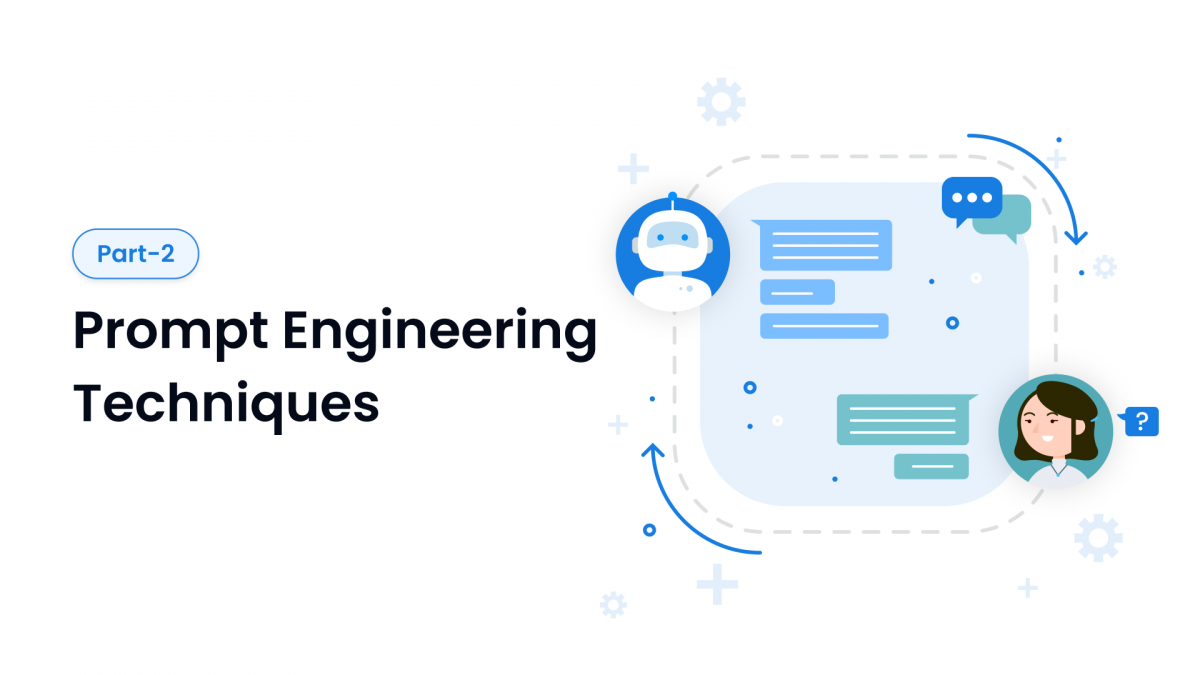Prompt Engineering Techniques Part-2

Prompt Engineering Techniques Part-2
In the first part of this article series, we discussed various prompt engineering techniques, such as zero-shot or few shots, Chain of Thought, Self-consistency, and Knowledge-generating prompting. In this article, we will take a closer look at ReACT, PAL, ReACT and PAL, and Automatic Prompt Engineer.
ReACT
ReAct is a framework that uses advanced language models (LLMs) to generate both reasoning traces and task-specific actions in an interleaved manner. This allows the model to induce, track, and update action plans, handle exceptions, and leverage external sources to improve accuracy and performance on specific tasks.
However, suppose the model comes across a question that it cannot answer based on its existing knowledge. In that case, ReAct allows the model to interact with external sources, such as news articles or financial reports, to gather more information. This additional information can then be used to update the model’s knowledge base, improving its performance on future questions.
For example, suppose the language model is asked about the recent fluctuations in the stock market. While the model may have some knowledge about the topic, it may not be sufficient to provide a detailed and accurate response. Using ReAct, the model can interact with external sources such as news articles or expert opinions, to gather more information about the reasons behind the fluctuations. This new information can then be incorporated into the model’s knowledge base, allowing it to better answer similar questions in the future.
Overall, this approach improves the model’s performance on specific tasks, making it more accurate and reliable.
PAL Prompt Engineering
Program-aided language models (PAL) are a type of AI that can read natural language problems and generate intermediate programming steps. These steps are then executed using a runtime environment like Python to solve the problem.
For example, let’s say you need to write a program that counts the number of words in a document. With PAL, you could describe the problem in natural language, like “count the number of words in this document,” and the model would generate the corresponding programmatic solution. This approach can save time and effort, especially for routine tasks.
However, there are still challenges to overcome, such as ensuring the generated programs are correct and efficient. Additionally, PAL may not be suitable for all types of programming tasks that require creativity or innovation. Nonetheless, PAL has the potential to change how we approach software development and programming.
ReACT and PAL
ReAct and PAL are both AI frameworks that use language models to solve complex tasks, but they differ in their approach and focus.
ReAct is designed for natural language understanding and generation tasks. It uses an interleaved approach to generate reasoning traces and task-specific actions, allowing the model to reason about the input and generate an appropriate response. ReAct can also interface with external sources to retrieve additional information and improve the accuracy and reliability of its responses.
On the other hand, PAL is designed for programmatic reasoning tasks. It uses an LLM to generate programs as intermediate reasoning steps, allowing it to solve problems by delegating the solution step to a runtime interpreter like Python.
For example, ReAct could be used to answer a natural language question about data science. The model would generate a list of keywords as part of the reasoning trace, and then interface with an external search API to retrieve relevant articles. These articles would inform the next reasoning trace, which could involve ranking the articles based on relevance and selecting the top 5 as the final task-specific action.
In contrast, PAL could be used to generate a program that counts the number of words in a document by reading a natural language input and generating a corresponding programmatic solution.
In summary, ReAct is focused on natural language understanding and generation tasks, while PAL is focused on programmatic reasoning tasks. Both frameworks can interface with external sources to improve the accuracy and reliability of their responses.
Automatic Prompt Engineering
Zhou et al. (2022) have proposed a framework called Automatic Prompt Engineer (APE) to automatically generate and select instructions. APE frames the instruction generation problem as a natural language synthesis problem and uses Large Language Models (LLMs) to generate candidate solutions, which are then searched for the best solution.
To generate candidate solutions, an LLM is used as the inference model and given output demonstrations for a task. The LLM generates instruction candidates, which guide the search procedure. The candidate instructions are then executed using a target model, and evaluation scores are computed to select the most appropriate instruction.
In simpler terms, APE is an AI framework that automatically generates and selects instructions for a given task. LLM generates options, target model executes them. The best instruction is selected based on evaluation scores. This framework can save time and effort in generating instructions for various tasks, allowing for more efficient completion of tasks.
Here’s an example of APE in the context of image classification:

Conclusion
Prompt engineering techniques are becoming increasingly popular in various industries due to their ability to generate high-quality text, images, and code. Each technique has its unique features and advantages, making them suitable for various text generation tasks.
Prompt engineering techniques save time and help create engaging content for writing tasks, from product descriptions to social media posts. For more advanced prompt engineering techniques please check out part 3 of this series.










